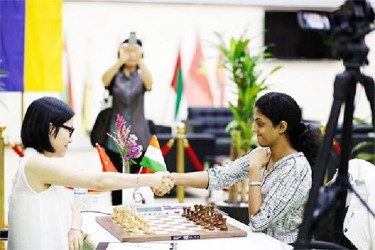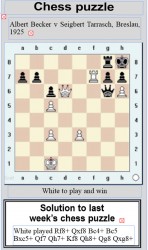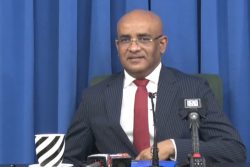FIDE has announced details of the 2014-15 Grand Prix series which will qualify two participants for the world championship Candidates chess tournament. The matches will all be contested in Eastern Europe and Asia, and will last from October until May 2015. The playing sites are Azerbaijan, Uzbekistan, Iran and Russia. The four tournaments which comprise the Grand Prix series have been reduced from the previous cycle’s six, and players are required to participate in three of the competitions. Sixteen of the world’s highest-ranked and strongest players, including the world champion Magnus Carlsen and Vishy Anand, have been invited to participate.
Meanwhile, the sixth and final stage of the Women’s Grand Prix series is currently being contested in the United Arab Emirates. Twelve of the most talented women chess players worldwide are competing in the Grand Prix. The winner of the series will play a ten-game world championship match with the women’s world champion. After round three, Ju Wenjun of China and Harika Dronavalli of India are leading the group with 2½ points each.
In Guyana, there is a vital lesson which we can learn from and embrace, when we consider the nature of these elimination tournaments. To obtain our most talented players, let us say for the next Olympiad, we could host three accumulative points tournaments within the next two year cycle, similar to the Grand Prix series. Beginning from this year’s national championships, game points could be awarded to the participants according to their performances. At the 2015 national championships, we could again employ the identical system to determine our consistent top performers. Finally, in 2016, before the commencement of the actual Olympiad in August or September, the GCF could host an elimination invitational tournament for the players with the most points from the previous national championships. The top five would qualify to represent Guyana at the formidable Olympiad. Such a method represents the basic idea of how we could identify our more ingenious players from among our chess population.
 I remain positive that such a method, if employed, would bring out our finest talent and diminish favouritism. Young people are now dominating the chess world. At three international tournaments recently, in July to be specific, Fabiano Caruana of Italy, at 22, won the Sparkassen Chess Meeting without losing a game. His victory raised him to No 3 in the world. At the ACP Golden Classic in Bergamo, Italy, Wesley So, 20, duplicated Caruana’s feat by winning the tournament without losing a game and with a round to spare. So now he basks at a career best of No 12 in the world. He is switching federations from his native Philippines to represent the United States. Maxime Vachier-Lagrave of France, 23, was also sailing along towards victory at the Biel International Chess Festival in Switzerland until he was beaten in the penultimate round by the Dutch player Anish Giri, 20. It was Vachier-Lagrave’s first loss in months. But he drew in the last round and that was enough to clinch the tournament title. His recent performances have lifted his ranking to No 9.
I remain positive that such a method, if employed, would bring out our finest talent and diminish favouritism. Young people are now dominating the chess world. At three international tournaments recently, in July to be specific, Fabiano Caruana of Italy, at 22, won the Sparkassen Chess Meeting without losing a game. His victory raised him to No 3 in the world. At the ACP Golden Classic in Bergamo, Italy, Wesley So, 20, duplicated Caruana’s feat by winning the tournament without losing a game and with a round to spare. So now he basks at a career best of No 12 in the world. He is switching federations from his native Philippines to represent the United States. Maxime Vachier-Lagrave of France, 23, was also sailing along towards victory at the Biel International Chess Festival in Switzerland until he was beaten in the penultimate round by the Dutch player Anish Giri, 20. It was Vachier-Lagrave’s first loss in months. But he drew in the last round and that was enough to clinch the tournament title. His recent performances have lifted his ranking to No 9.
It has therefore become necessary for us to capture our smart talent, the very best that we can manage, and give them an opportunity to become budding international chess stars. We should begin our quest for Caribbean supremacy with the 2016 Olympiad in Baku.
Chess games
American grandmaster Hikaru Nakamura and the chess computer Stockfish, opposed each other this month in a four-game dramatic and scintillating chess match. Nakamura had the theoretical assistance of Rybka in two of his games, but Stockfish drew with him in one of the games where he had benefited from the assistance of Rybka, and defeated him in the other. The match ended 3-1 in favour of Stockfish. The other game was played at the 2014 Tromso Olympiad by Guyanese Maria Thomas.

Nakamura v Stockfish
White: Hikaru Nakamura
Black: Stockfish (Computer)
WhiteElo 2785; BlackElo 3000
1. e4 c5 2. Nf3 Nf6 3. Nc3 Nc6 4. d4 cxd4 5. Nxd4 e5 6. Ndb5 d6 7. Nd5 Nxd5 8. exd5 Ne7 9. c4 Nf5 10. Bd3 Bd7 11. Bxf5 Bxf5 12. Qa4 Bd7 13. Qb4 Qb8 14. Be3 a6 15. Nc3 b5 16. cxb5 Bxb5 17. Nxb5 Qxb5 18. Qxb5+ axb5 19. Ke2 Kd7 20. b3 Be7 21. a4 bxa4 22. Rxa4 Rhc8 23. Rha1 Rab8 24. Rc4 Rc7 25. Rxc7+ Kxc7 26. Ra7+ Kd8 27. Bd2 Rxb3 28. Ba5+ Ke8 29. Ra8+ Kd7 30. Ra7+ Ke8 31. Ra8+ Kd7 32. Ra7+ 1/2-1/2.
Nakamura v Stockfish
White: Nakamura / Rybka
Black: Stockfish (Computer)
1.e4 e6 2.d4 d5 3.Nd2 c5 4.Ngf3 Nf6 5.exd5 exd5 6.Bb5+ Bd7 7.Bxd7+ Nbxd7 8.O-O Be7 9.dxc5 Nxc5 10.Nb3 Nce4 11.Nfd4 O-O 12.Nf5 Re8 13.Nxe7+ Rxe7 14.Be3 Rc8 15.Bd4 Nd7 16.Re1 b6 17.f3 Nec5 18.Rxe7 Qxe7 19.Qd2 Nxb3 20.axb3 Nc5 21.Bf2 Ne6 22.c3 Rd8 23.b4 h6 24.Qe2 Rd7 25.Rd1 Qg5 26.g3 Qf5 27.Kg2 h5 28.Qd3 Qxd3 29.Rxd3 g5 30.Kf1 f5 31.c4 Kf7 32.c5 d4 33.c6 Rd6 34.b5 Ke8 35.Ra3 Nc7 36.Rxa7 Nxb5 37.Ra8+ Ke7 38.Rc8 d3 39.Ke1 Re6+ 40.Kd1 Re2 41.Bxb6 Rxb2 42.Bd8+ Kd6 43.Bxg5 Rxh2 44.Bf4+ Kc5 45.Ke1 h4 46.gxh4 Rxh4 47.Be3+ Kd5 48.c7 Kc6 49.Rf8 Nxc7 50.Kd2 f4 51.Rxf4 Rxf4 52.Bxf4 Ne6 53.Be3 Kd5 54.Kxd3 Ke5 55.f4+ Kf5 56.Bd2 1/2-1/2.
Varona-Thomas v Sarwary
White: Maria Varona-Thomas
Black: Hamidullah Sarwary
WhiteElo 1777; BlackElo 1920
1. e4 c5 2. Nf3 Nc6 3. d4 cxd4 4. Nxd4 e5 5. Nf3 Nf6 6. Nc3 Be7 7. Bd3 d6 8. h3 O-O 9. a3 Kh8 10. O-O Be6 11. Qe2 Rc8 12. Be3 a6 13. Rfd1 Qc7 14. Rd2 Rfd8 15. Na4 Nd7 16. b4 b5 17. Nb2 Nf6 18. Rc1 d5 19. exd5 Bxd5 20. Bf5 Rb8 21. c4 bxc4 22. Nxc4 e4 23.  Ng5 Ne5 24. Rxd5 Rxd5 25. Nxe5 Qxe5 26. Nxf7+ Kg8 27. Nxe5 Rxe5 28. Bxh7+ Nxh7 29. Bf4 Reb5 30. Bxb8 Rxb8 31. Qxe4 Bf6 32. Qe6+ Kh8 33. Rc8+ 1-0.
Ng5 Ne5 24. Rxd5 Rxd5 25. Nxe5 Qxe5 26. Nxf7+ Kg8 27. Nxe5 Rxe5 28. Bxh7+ Nxh7 29. Bf4 Reb5 30. Bxb8 Rxb8 31. Qxe4 Bf6 32. Qe6+ Kh8 33. Rc8+ 1-0.









